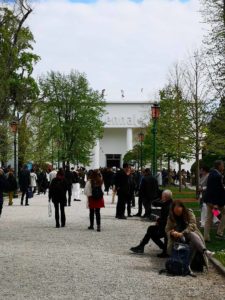 La Biennale di Venezia
La Biennale di Venezia
59th International Art Exhibition
The Milk of Dreams
Venice (Giardini and Arsenale)
23 April – 27 November 2022
www.labiennale.org
This year’s Biennale opened officially on April 23rd, nearly one year later than planned due to the pandemic, but one month earlier than usual. Certainly, not only the schedule is particular. Under the title “The Milk of Dreams” the curator, Cecilia Alemani – for the first time an Italian female artistic director – invited 213 artists from 58 countries. Remarkable is that more than 180 artists are for the first time represented in the International Art Exhibition. Even more notable is the majority of female and gender non-conforming creatives, an absolute novelty in the 127-year history of the show. Besides many contemporary works and 80 new projects, specifically conceived for the main exhibition, there are numerous historic works. These oeuvres of often neglected artists underline their involvement in artistic movements in art history, if not their pioneering role. Furthermore, trans-historical approaches are manifested. Moreover, there are 80 National Participations, located in the historic pavilions in the Giardini and the Arsenale or in various venues in the city centre. Additionally, the “Piazza Ucraina”, wants to give a voice to artists and the art community of the Ukraine as well as other countries to express solidarity with the people of Ukraine.
Traditionally, the main exhibition is split between the Central Pavilion in the Giardini and the huge halls of the Arsenale in Venice. Both venues initiate with a big bang. In the Central Pavilion, it is Katharina Fritsch’s big blue “Elephant”, which is reflected by mirrors in the housing octagon. The first room in the Arsenale is dominated by Simone Leigh’s monumental sculpture “Brick House”, surrounded by graphic prints by Belkis Ayón. Besides, this hall is also arranged as an octagon. A wide range of artworks, huge installations, sculptures or smaller panel paintings, graphics and photos, follows either case.
The Milk of Dreams in the Giardini:
The Milk of Dreams in the Arsenale:
Like the main exhibition, the National Participations vary in their chosen media. There are room-filling installations, some sound orientated others more visual and still other uniting both. At the same time, one could find more classical sculptures or two dimensional images. Several are featuring single artists or concentrate on two creatives. However, there are also group exhibitions presenting a number of artists. With the show “Born to Love” Azerbaijan offers seven female positions. Herewith, it follows the tendency of the main exhibition. Uganda, for the first time at the Biennale, invited two renowned artists of its country. The Sámi Pavilion (Nordic Countries) points to the Sámi, their traditions and contemporary challenges. Spain and Germany are focussing on their historic building in the Giardini while others reflect on contemporary subjects. Text: Astrid GallinatPhotos © Astrid Gallinat & Stephan Goseberg, if not mentioned otherwise












































